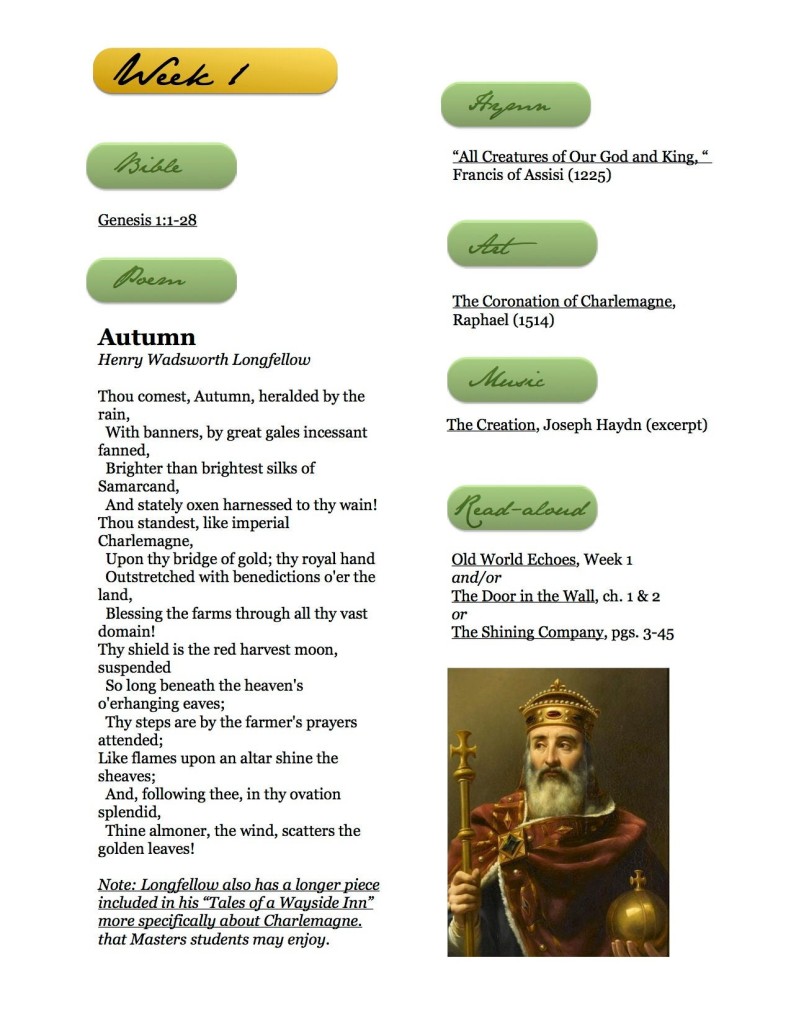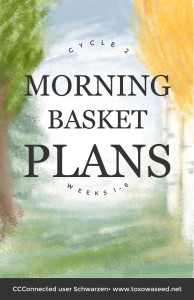Links may direct to affiliate sites. Purchases made through these links support our family’s work in spreading the Gospel to unreached areas.
I posted last week about how, after a rough first year of trying to make my family fit into the Classical Conversations curriculum, I managed to regain my spirit of scholé by flipping the paradigm and making Foundations fit us. This post is for those who wondered what that looks like, how I made it happen, and if it’s something they can do in their own homeschool
First, though, a disclaimer. I am not a purist. If you want to fit in in circles where “CC or die” is the motto, my approach will mark you as a rebel. I’ve never been able to adhere to a single educational philosophy, in large part because neither my various children nor my eclectic self has ever quite fit neatly into a defined box. While the Charlotte Mason methodology has always resonated most strongly with me, I’ve discarded those elements that don’t work for my family. That means that when a rabbit trail adds 40 minutes to a planned 20 minute lesson, I don’t shut it down and I don’t feel like a failure. It also means that we’ve only read brief selections from Our Island Story, rather than the prescribed long, slow read through. My take on Foundations probably doesn’t look anything like what Leigh Bortins imagined when she wrote The Core, but it’s working beautifully for my family and that’s my goal.
The biggest hole in our first rocky year was a decided absence of read-alouds. Long the backbone of our family, let alone our homeschool, read-alouds are the thread that crosses the gap of many ages in this house. We speak in books here, and only fitting in a handful of read-alouds over the course of a school year felt, well… sad. Although CC strongly encourages reading and literature, there are no suggestions for books in the Foundations curriculum guide. At first, I saw that as a disappointing lack. Now, I see it as an open door. CC doesn’t tie you to specific books at specific times. You can choose from a limitless number of titles, and either tie your reading to the history cycle you’re studying, or a scientist you’ve studied, or go off road and pick up the new release from your favorite author and dive in. Changing my perspective on what’s planned (and what’s not) in the guide made a world of difference in how I felt about CC!
My second beef with Foundations is the breakneck speed at which the history sentences move. Two weeks on World War II? Are you kidding me? The first year, we only studied exactly what the history sentence covered that week, and we were all suffering from the disjointed skip through time. Then I decided that while a new history sentence each week was great, we were going to focus on history periods, and cultivate a sense of wonder and familiarity with the people and places we visited along the way. Henceforth, two weeks on WWII became two months in Europe, with continual discussion on the war itself. Problem solved.
 From there, adapting CC was actually fun. I took my cues from Foundations when assembling our Morning Basket, and we set up our opening routine around hymns, art, music, and poetry that fed into the week’s memory work. A history sentence about India seeking independence from the British? Perfect opportunity for singing “I Have Decided to Follow Jesus,” written by missionary Sundar Singh, as well as reading a biography about his work. Poetry by Muhammad Iqbal might be on tap. I built our science studies on the themes I found in CC’s Foundation’s guide, but went heavy on the resources I loved best. Nature Anatomy, Botanicum, field guides, journaling and picture books are still our go-to. We stuck with our more discovery-based math methodology and living math books, even while committing the times tables to memory and reciting the commutative law.
From there, adapting CC was actually fun. I took my cues from Foundations when assembling our Morning Basket, and we set up our opening routine around hymns, art, music, and poetry that fed into the week’s memory work. A history sentence about India seeking independence from the British? Perfect opportunity for singing “I Have Decided to Follow Jesus,” written by missionary Sundar Singh, as well as reading a biography about his work. Poetry by Muhammad Iqbal might be on tap. I built our science studies on the themes I found in CC’s Foundation’s guide, but went heavy on the resources I loved best. Nature Anatomy, Botanicum, field guides, journaling and picture books are still our go-to. We stuck with our more discovery-based math methodology and living math books, even while committing the times tables to memory and reciting the commutative law.
Suddenly, the unsatisfactory “shallow dip” I feared felt like the refreshing “deep dive” I remembered. All it took was reframing my expectations and casting my net wider.
Can you make this happen in your own home? Is it possible to participate in CC with freedom… and still feel like your kids are getting “the most for your money”? For most families, I’d say yes. Not all, of course. (And isn’t that the beauty of homeschooling, after all?)
My recommendations:
- If you’re a read-aloud family, keep an ongoing, curated list of titles for reference. Include books you just want to make sure you read as well as ones that fit upcoming cycles.
- In my opinion, everyone should add Living Math to their bookmarks! Even if you do Saxon worksheets for fun, your math time can only be enhanced through adding these games and books!
- Shift your thinking. Start seeing Foundations as a springboard, not a straitjacket.
- Don’t be afraid to slow down. Singing a song about the Mediterranean in New Grammar on Community Day doesn’t mean you can’t keep talking about the mountains of Asia at home if you’re not done enjoying that part of geography. Same goes for history!
- The English memory work feels oddly disjointed until you’ve gone through all three cycles once. This is one where I do recommend you “trust the process” and simply commit it to memory and move on.
- Put some time into looking ahead, making library holds, and digging up resources that will speak to your children’s hearts and minds.
- Use the resources you love. If your particular bent has some tried-and-true resources (ahem, Our Island Story) see where it ties in to the CC Memory Work and go for it.
- If you’d like to purchase open-and-go plans for your Morning Basket time, consider mine (available through etsy). The work described above has been done for you, and once you’ve purchased or borrowed whichever read-aloud you choose, no other outside resources are required! (I’ll be sharing more about these in a few weeks!)

Thank you so much for making your CC Morning Basket plans available on Etsy! Will weeks 19-24 be available at some point, as well?
I am hoping to have them available by the end of the month!
Great advice! I would add one more thing- if any of the memory work seems disjointed or even crazy- take the time to visit some Challenge classes. Foundations makes more sense as my boys work their way through Challenge!
I didn’t realize until about a year ago that the Challenge levels came first. That put everything into perspective!